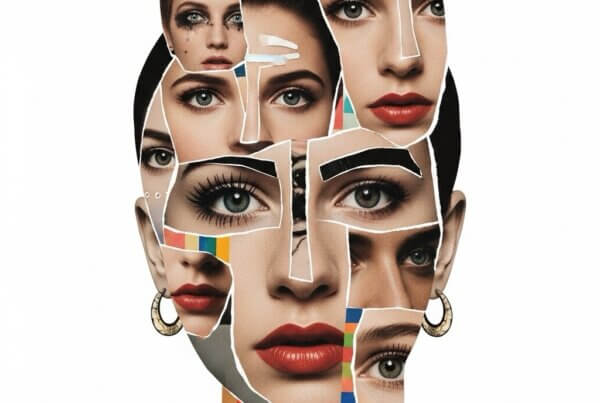If you’ve been on TikTok or anywhere near a good playlist lately, you’ve likely been hit with the raw, soul-shaking voice of Lola Young. Her tracks, like “Messy” and “Dealer,” aren’t just bangers; they’re emotional excavations, digging deep into themes of love, self-worth, and chaos with a vulnerability that feels both radical and relatable. But part of what makes her artistry so potent is her unflinching honesty about her life off the mic—specifically, her journey with mental health.
For a while, Young, like many others, navigated her intense emotional landscape. But after being hospitalized, she received a different diagnosis: schizoaffective disorder. This has left many fans wondering, what exactly is the difference? Let’s break it down, because understanding is the first step to destigmatizing.
The Raw Power and Public Journey of Lola Young
Lola Young’s rise hasn’t been quiet. The 23-year-old South Londoner and BRIT School alum (the same school that gave us Adele and Amy Winehouse) creates music that refuses to be background noise. It demands your attention. She once described her creative process as a way to “vomit my feelings out so I don’t have to feel them anymore.” It’s that exact unfiltered expression that connects so deeply with a generation fluent in discussing mental wellness.
But her bravery extends beyond her lyrics. She’s openly discussed how a manic episode made her go buy small cars (trinkets), but she still has them in her house and sometimes has to share about why she has them. This openness is a game-changer. By sharing her story, she gives a face and a powerful voice to a condition often misunderstood and shrouded in silence, challenging the shame that can come with a complex diagnosis.
“I think it’s the idea that you don’t have to be this thing that stereotypers want women to be,” she began. “It’s not even just that though, because everyone can feel like they’re not enough for somebody. ‘I want to be me, is that not allowed?’ – that’s a great lyric! I’m very proud of it and it feels like it’s resonating with people on a wider scale.’”
Is it Bipolar?: Unpacking the Diagnostic Confusion
It’s easy to see why the initial wires got crossed. Manic highs followed by crushing depressive lows are the hallmark symptoms of bipolar disorder. When you’re riding that rollercoaster, it’s the most obvious label to reach for. Lola experienced these intense mood episodes, which is a major component of schizoaffective disorder as well. So, what’s the real tea?
Bipolar vs. Schizoaffective Disorder: The Clinical Lowdown
Think of it like this: bipolar disorder and schizophrenia are two distinct circles. Schizoaffective disorder isn’t just a third circle; it’s the specific, complex area where those two circles overlap. The key difference isn’t about the types of symptoms, but their timing and persistence.
What they have in common:
- Major Mood Episodes: Both conditions involve periods of intense mood disturbance. This includes mania (or hypomania), characterized by high energy, racing thoughts, and impulsive behavior, and periods of major depression.
The Crucial Difference: The Role of Psychosis
Psychosis includes symptoms like hallucinations (seeing or hearing things that aren’t there) and delusions (strong, false beliefs). This is where the paths diverge, and it’s the defining factor for diagnosticians.
- In Bipolar Disorder with Psychotic Features, psychosis is like a chaotic guest star—it only shows up during a full-blown manic or depressive episode. When the mood stabilizes, the psychosis packs its bags and leaves.
- In Schizoaffective Disorder, psychosis is a main character. To be diagnosed, according to the DSM-5 (the official manual for mental health pros), a person must experience at least two weeks of psychotic symptoms without any major mood episode present. The psychosis has its own storyline, independent of the mania or depression.
Basically, with bipolar, the psychosis is tied to the mood swing. With schizoaffective disorder, the psychosis can happen on its own, making it a more persistent and complex condition to manage. According to the National Alliance on Mental Illness (NAMI), schizoaffective disorder is significantly less common than bipolar disorder, affecting about 0.3% of the population, which often leads to it being misdiagnosed.

Lola Young has been praised for her candidness when discussing topics of mental health and wellness in her music and interviews.
The Double-Edged Sword: Stardom, Stigma, and Sharing Online
Being a public figure like Lola Young and discussing mental health is walking a tightrope. On one side, you have a massive platform to smash stigma and build community. On the other, you open yourself up to a flood of opinions, armchair diagnoses, and the intense pressure of being a role model. The internet can be an echo chamber of both support and misinformation, which makes her clarity and courage all the more remarkable.
Her willingness to step forward and say, “This is my real diagnosis, and this is what it means,” does more than just correct the record. It gives others the language to understand their own experiences and the courage to seek answers without feeling isolated or “crazy.”
Are You Listening to Your Mind? Signs You Might Need to Check In
Lola’s journey highlights the importance of getting a precise diagnosis. If her story, or the symptoms described, resonate with you, it might be time to check in with a professional. (Disclaimer: This is not a diagnostic tool, but a guide to help you recognize potential warning signs.)
- Extreme Mood Swings: Highs that feel euphoric and out of control (mania) and lows that feel debilitating (depression).
- Psychotic Symptoms: Experiencing paranoia, disorganized thoughts, or seeing/hearing things others don’t—especially if these occur when your mood feels relatively stable.
- Social Withdrawal: Isolating yourself from friends and family.
- Changes in Functioning: A noticeable decline in your ability to keep up with school, work, or even personal hygiene and daily tasks.
- Disorganized Speech or Behavior: Thoughts feel jumbled, and you struggle to communicate them clearly.
Getting Help is a Power Move: What Treatment Looks Like
Let’s be clear: seeking help is not giving up. It’s taking control. A proper diagnosis is the first step toward getting the right support, because the treatment for bipolar and schizoaffective disorder can differ.
Treatment is not a one-size-fits-all deal, but it generally involves a combination of approaches:
- Medication: This is often the cornerstone of treatment. For schizoaffective disorder, this typically includes mood stabilizers to manage the bipolar-like mood swings and antipsychotic medication to address symptoms of psychosis.
- Psychotherapy (Talk Therapy): Cognitive Behavioral Therapy (CBT) and other modalities can help you develop coping skills, manage symptoms, identify triggers, and improve relationships. Therapy is where you learn to navigate life with your diagnosis.
- Support Systems: This includes family therapy and support groups where you can connect with others who get it.
As for the timeline? Managing a condition like schizoaffective disorder is a marathon, not a sprint. It’s about finding the right combination of treatments that allows you to live a full, creative, and stable life—just as Lola Young is powerfully demonstrating.
The Takeaway: From Confusion to Clarity
Lola Young’s story is a masterclass in the power of owning your narrative. By sharing her journey from a presumed bipolar diagnosis to a confirmed schizoaffective one, she’s not just talking about music—she’s championing a bigger conversation about mental wellness. She reminds us that:
- Confusion is normal, but clarity is possible. The line between complex mental health conditions can be blurry, which is why professional insight is vital.
- Openness dissolves shame. Sharing stories builds bridges and makes people feel less alone in their struggle.
- Getting help is a sign of strength. A diagnosis is not a label that defines you; it’s a tool that empowers you to get the right help and thrive.
Lola Young’s mind might be a complex and sometimes messy place—but it’s also the source of incredible art that’s moving the world. And that’s a powerful reminder that with the right support, it’s possible to manage your mental health and still be a total icon.
By Valerie T.


